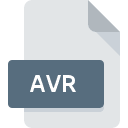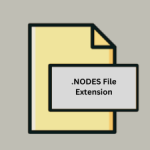.IAA File Extension

INTUS Audio Archive
| Developer | PCS Systemtechnik |
| Popularity | |
| Category | Audio Files |
| Format | .IAA |
| Cross Platform | Update Soon |
What is an IAA file?
The .IAA file extension is a unique identifier for a specific type of digital file. In the world of computing, file extensions are critical as they inform the operating system and the user about the type of data contained within a file and how it should be handled.
The .IAA file format is associated with specific characteristics and functionalities, which we will explore in this article.
More Information.
The history of the .IAA file extension is intertwined with the evolution of digital file storage and data management.
Initially, the .IAA format was created to address certain limitations found in other file formats. Its purpose was to provide a more efficient way of storing and handling specific types of data, possibly in a professional or specialized field.
Examining its history reveals the technological advancements and changing needs that shaped its development.
Origin Of This File.
The .IAA file format, like many file formats, was developed to meet specific data storage and processing needs.
The origin of the .IAA file extension is rooted in the need for a specialized format that could efficiently store and manage particular types of data.
Understanding its origin requires delving into the context in which this file format was first conceptualized and the specific requirements it was designed to fulfill.
File Structure Technical Specification.
The structure of a .IAA file is critical to its functionality. This section would dissect the technical specifications of the .IAA file format, including how it organizes data, the type of encoding used, and any unique characteristics that differentiate it from other file formats.
Understanding the file structure is essential for professionals who need to manipulate or extract information from these files effectively.
How to Convert the File?
Converting a .IAA file to a more commonly used file format can be essential for compatibility or for processing the data in standard applications. The process varies based on the target format and the tools available. Here’s a detailed guide:
- Identify the Target Format: Determine the format you need to convert the .IAA file into. Common formats include .PDF, .DOCX, .CSV, or .TXT, depending on the data type and intended use.
- Choose the Right Software: Not all file conversion software supports .IAA files, so it’s crucial to find a tool that does. Look for specialized conversion tools that list .IAA as a supported format. This might involve some research or seeking recommendations from forums or professionals who regularly handle .IAA files.
- Install Conversion Software: Once you’ve identified a suitable tool, download and install it on your computer. Ensure you obtain the software from a reputable source to avoid malware.
- Open the .IAA File in the Converter: Launch the conversion software and open the .IAA file within the program. This is typically done through an ‘Open’ or ‘Import’ option within the file menu.
- Set Conversion Parameters: Select the target format you wish to convert your .IAA file into. Some converters also allow you to adjust specific settings like resolution, data encoding, or compression levels, depending on the target format.
- Convert the File: Execute the conversion process, usually by clicking a ‘Convert’ or ‘Export’ button. The time taken for conversion depends on the file size and the complexity of the data.
- Save or Export the Converted File: Once the conversion is complete, save or export the newly converted file to your desired location. Make sure to give it an appropriate name and verify that it saved in the correct format.
- Test the Converted File: Open the converted file in a relevant application to ensure the conversion was successful and that all data is intact and accurately represented.
Advantages And Disadvantages.
Advantages
- Specialized Data Handling: The .IAA file format is often designed for specialized purposes, meaning it can handle specific types of data more efficiently than more general file formats. This specialization can lead to better performance in specific applications.
- Data Integrity and Security: .IAA files may incorporate advanced features for maintaining data integrity and security. This could include built-in checksums, encryption, or other security measures that are particularly important for sensitive or critical data.
- Optimized Storage: Depending on its design, the .IAA format might offer optimized storage capabilities, such as efficient data compression, which can save disk space and reduce transmission times over networks.
- Compatibility with Specific Software: For software designed to work with .IAA files, these files can offer enhanced functionality or performance that is not possible with more generic file formats.
- Advanced Features: The .IAA format might support advanced features not available in other formats, such as complex data structures, metadata, or embedded objects, which can be crucial for certain applications.
Disadvantages
- Limited Compatibility: One of the main drawbacks of the .IAA file format is its limited compatibility with common software applications. Users might find it challenging to open, edit, or view .IAA files without specific software designed for them.
- Requirement for Specialized Software: To access or process .IAA files, users may need specialized software, which can be costly or difficult to obtain. This software dependency can be a significant barrier, especially for individuals or small organizations.
- Complexity in Handling: Due to their specialized nature, .IAA files can be more complex to handle compared to more standard file formats. This complexity might require additional training or expertise, leading to higher operational costs.
- Risk of Obsolescence: Specialized file formats like .IAA run a higher risk of becoming obsolete as technology evolves. If the software or systems that support .IAA files are discontinued, it may become difficult to access the data contained within these files.
- Conversion Challenges: Converting .IAA files to more widely-used formats can sometimes lead to loss of data fidelity or functionality. The conversion process itself can also be complicated and time-consuming.
- Lack of Standardization: If the .IAA format lacks standardization across the industry, there can be compatibility issues even among different versions of the software intended to handle these files. This lack of uniformity can lead to significant challenges in data exchange and interoperability.
How to Open IAA?
Open In Windows
- Check for Native Support: Some versions of Windows might natively support .IAA files. Try double-clicking the file to see if it opens with a default program.
- Install Necessary Software: If Windows doesn’t natively support .IAA files, you’ll need to install software that does. This could be a specific application related to where the .IAA file originated, or a general file viewer that supports .IAA formats.
- Open the File: After installing the necessary software, right-click on the .IAA file, select ‘Open with,’ and choose the installed application.
Open In Linux
- Try Default Openers: On Linux, double-click the .IAA file to check if any pre-installed application can open it.
- Install a Compatible Application: If no default application can open it, search for a Linux-compatible tool that supports .IAA files. Use your package manager to install it.
- Use the Terminal: Sometimes, it’s more efficient to use the terminal. You can open the terminal and use a command like
open <filename.iaa>orxdg-open <filename.iaa>after installing a compatible application.
Open In MAC
- Attempt Default Opening: Double-click the .IAA file to see if macOS can open it with a default application.
- Seek Compatible Software: If macOS cannot open it, search for a Mac-compatible program that supports .IAA files. Download and install this software.
- Open with Installed Application: Right-click on the .IAA file, select ‘Open with,’ and then choose the newly installed program.













